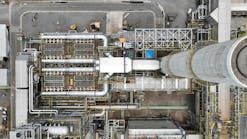US refiners could process more light tight crudes, study finds
US refiners will have the capacity by 2020 to process 3.1-4.3 million b/d more of light, tight crude oil (LTC) than in fourth-quarter 2013, according to a Baker & O’Brien Inc. study commissioned by Consumers & Refiners United for Domestic Energy (CRUDE).
This is well beyond the US Energy Information Administration’s high reference case forecast for incremental US LTC production through 2020 in its 2014 Annual Energy Outlook, CRUDE said on Oct. 2 as it released the study’s findings.
“This insightful expert analysis refutes the argument advanced by many domestic oil producers, as well as some analysts, that the domestic refining industry will soon be unable to absorb all the oil that, thanks to new drilling techniques, is now flowing from North Dakota, Texas, and other regions of the US,” said Jeffrey Peck, a principal at Peck Madigan Jones and a spokesman for CRUDE.
The argument is being made to convince the Obama administration and Congress to remove restrictions from US crude exports, Peck said. “In fact, the US refining system is the largest, most complex, and flexible in the world,” he said, adding, “With displacement of existing imports, increased utilization, and investment in modest capacity expansions, US refiners should be able to process all the [LTC] that will be produced in the US for the remainder of this decade and likely for years beyond.”
US refiners have announced projects that would add 800,000 to 1.1 million b/d of LTC processing capacity by 2019, the study said. Refiners could implement projects beyond those which have been announced because several are still evaluating their options, it added.
Underutilized capacity
US refiners apparently underutilized their naphtha and lighter processing capacity during 2013’s final 3 months because of low crude throughput due to maintenance, economics, and other factors; and a crude slate oriented toward medium and/or heavy grades, the study said.
It said refiners could process another 432,000 b/d of LTC using existing capacity (with 320,000 b/d of incremental refinery crude runs, and 112,000 b/d through direct displacement of medium grades).
“For relatively moderate capital, it is expected that many refiners could debottleneck their facilities to process 10-20% more naphtha and lighter material,” the study said. “By 2020, it is estimated that refiners will implement additional projects that will absorb 108,000-503,000 b/d of [LTC], at an average industry cost of $50-$240 million/year (over 5 years).”
In its executive summary, the study said there is no limit from a conceptual standpoint to the amount of LTC that US refiners could process given proper economic incentives and enough lead time to modify and expand capacity.
It said LTC processing is relatively simpler and much less capital-intensive compared to the heavier, sour grades many refineries handle. “Similar to [LTC] production, [LTC] processing capacity is dynamic and is likely to respond to changes in [LTC] production,” it said. “If LTC production increases beyond projections, then additional LTC processing capacity is likely to be added.”
Contact Nick Snow at [email protected].

Nick Snow
NICK SNOW covered oil and gas in Washington for more than 30 years. He worked in several capacities for The Oil Daily and was founding editor of Petroleum Finance Week before joining OGJ as its Washington correspondent in September 2005 and becoming its full-time Washington editor in October 2007. He retired from OGJ in January 2020.

